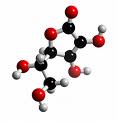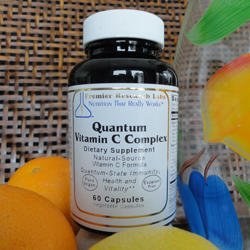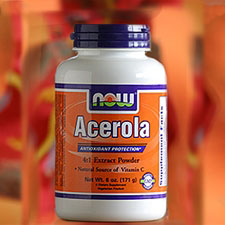
Thousands of bottles of ascorbic acid are purchased everyday under the misguided assumption that ascorbic acid is the same as vitamin C. In reality, ascorbic acid is an isolated nutrient that is part of vitamin C but it is not the whole vitamin C.
You are getting cheated if you buy ascorbic acid thinking it is vitamin C. But that may be only a partial injustice! Studies over the last several years demonstrate that people taking high doses of ascorbic acid put themselves at risk for a number of health challenges. One study demonstrated that doses of 500 mg a day or more of ascorbic acid increase the incidence of arterial plaque buildup. Another study indicated that gallstones are more likely to appear in those taking ascorbic acid.
You may ask, what about all the studies done by Linus Pauling and other reputable researchers who have proven the benefits of Vitamin C and ascorbic acid? Let us put a little perspective on this:
Back in the 1930’s ascorbic acid was isolated out of little red peppers by Dr. Albert Szent-Gyorgyi who won a Nobel Prize for his work. What he also found, which has mostly been ignored until recently, was that ascorbic acid was far more biologically available and active while it was still in the red pepper.
Scientists of the era of “Better Living Through Chemistry and Science” (which we have been experiencing for the last sixty years) decided to take the discoveries about Vitamin C and “improve” on Mother Nature.
They found that extracting ascorbic acid from natural foods, such as the red peppers, cabbage, cranberries, gooseberries, or acerola berries, is relatively expensive. Ascorbic acid can be created in the laboratory much less expensively (and of course much more profitably). Scientists discovered that they could take corn syrup, mix it with hydrochloric acid, and voila: ascorbic acid! (By the way, the corn is more likely than ever to be genetically modified and of course not organically grown.)
Years later, scientists discovered what Dr. Szent-Györgyi had discovered about ascorbic acid: it is not as effective when detached from the whole food matrix! So they went about trying to determine what other factors there could be in the whole food that would make the ascorbic acid work better.
First, they discovered the importance of bioflavonoids, so they figured out how to produce these synthetically in the laboratory, to be added to the ascorbic acid. Then they found that ascorbic acid worked better as a mineral ascorbate and they worked on that! Then they found that fat-soluble ascorbic acid was superior, because it went directly to the liver vs. water soluble ascorbic acid. In fact if you put 100 mg of ascorbic acid in the body, within a few hours at least 90% of it would be excreted in the urine. If you put 10 times more into the body to account for a 90% loss it would cause diarrhea. So they experimented with various things and concluded that if you attach the ascorbic acid molecule to another molecule, in one case a metabolite, the ascorbic acid will stay in the body longer (they didn’t seem to care why it stayed in the body longer, but it stayed in the body longer and hopefully that was a good thing).
Today there is a broad variety of ascorbic acid products with various things attached to them. With all this research, time, thought and dollars being put into creating a synthetic vitamin C, the fact remains that none of them can come even close to the potentials of what Mother Nature makes. One important factor that science has not been able to duplicate is the special kind of energy that holds living food together. Whether this energy is found in the enzymes or in the energy patterns of whole food structures, it is unlikely that science will ever be able to reproduce it in a laboratory. This may be one of several reasons why studies have shown that the body will absorb close to 100% of the vitamin C that is consumed as part of a whole food, whereas barely 10% of the “stripped down” ascorbic acid is absorbed.
Again it is an issue of what we are willing to put into our bodies. Mother Nature has created foods for us that are complex and designed to be metabolized by our bodies in a synergistic way.
Natural whole food sources of vitamin C include: Amla, Camu, and Acerola
If you want a true Vitamin C product the way nature intended, discover Amla C, Pure Radiance C, Royal Camu, and Acerola and Vitamin C Complex. You'll be glad you did!





